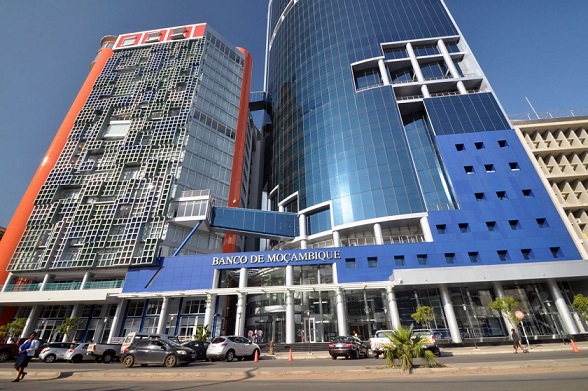Mozambique: Minister Muhate strengthens strategic partnerships in Geneva
IMF sees “pockets of vulnerability” among Mozambican banks in the face of “very high real interest rates”

Image: Lusa
The International Monetary Fund points to “pockets of vulnerability” among smaller Mozambican banks due to “very high” real interest rates, an IMF report consulted by Lusa reveals.
“Although financial soundness indicators paint a healthy picture for the aggregate financial system, bank-level data show pockets of vulnerability, especially among smaller banks, as very high real interest rates drive up NPLs [non-performing loans],” reads the IMF report on the approval, this month, of the third evaluation of the implementation of the Extended Credit Facility (ECF) program in Mozambique.
It adds that “although the financial system is relatively stable”, the “persistently high real rates increase financial stability and government financing risks”, at a time when, by decision of the central bank, the monetary policy interest rate was, several months ago, left at 17.25%.
“At the same time, reserve requirements close to 40 percent constrain the ability of the banks to finance the sovereign,” the IMF also notes, alluding to the monetary policy applied last year by the Bank of Mozambique.
“Over the past five years, banks’ holdings of central government securities averaged 23.6 percent of assets, peaking at 28.3 percent in August 2018,” recalls the IMF. “As of September 2023, holdings are down to 19.8 percent of assets.”
Data from the central bank indicate that 15 commercial banks and 12 micro-banks operate in Mozambique, in addition to credit cooperatives and savings and credit organizations, among others.
The Bank of Mozambique recognized, last December, an increase in non-performing loans (NPL) in Mozambican banks in the first half of the year, which went from moderate to high risk.
The Bank of Mozambique’s Financial Stability Bulletin for the first half of the year states that, in June, “credit risk remained at a moderate level, despite the worsening of the NPL in the semester, which moved from moderate risk level in December 2022 to high”.
“The maintenance of credit risk at a moderate level was favoured by the remaining gap in the credit to economy/GDP [gross domestic product] ratio at negative levels, showing that this ratio continues below its long-term trend, and by weak growth in the credit to the economy which stood at 7.83% in June 2023, corresponding to a low risk level,” the bulletin reads.
The Bank of Mozambique reports that the ratio of NPL to total credit granted rose at the end of the first semester to 10.58%, compared to 8.97% in December. In June 2022, the NPL ratio was 10.02% and a year earlier it was 9.92%.
Last June, the NPL coverage ratio by banks was 70.61%, against 71.84% in December 2022, but above 67.99% a year ago.
The governor of the Bank of Mozambique, Rogério Lucas Zandamela, stated in November that the country’s banking sector is “solid and well capitalised”, but warned that non-performing credit remains at high levels.
“The non-performing credit ratio remains at relatively high levels,” Zandamela said at the time.
“The national banking sector remains solid and well capitalised, with the solvency ratio set at 24% in September this year, corresponding to 12 percentage points above the regulatory minimum,” the central bank governor highlighted.












Leave a Reply
Be the First to Comment!
You must be logged in to post a comment.
You must be logged in to post a comment.